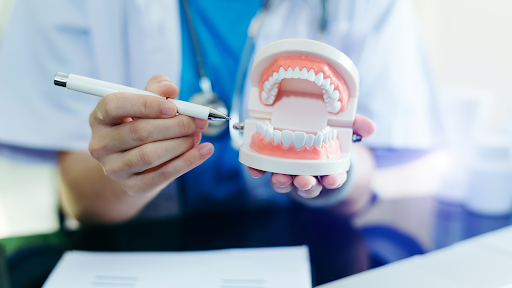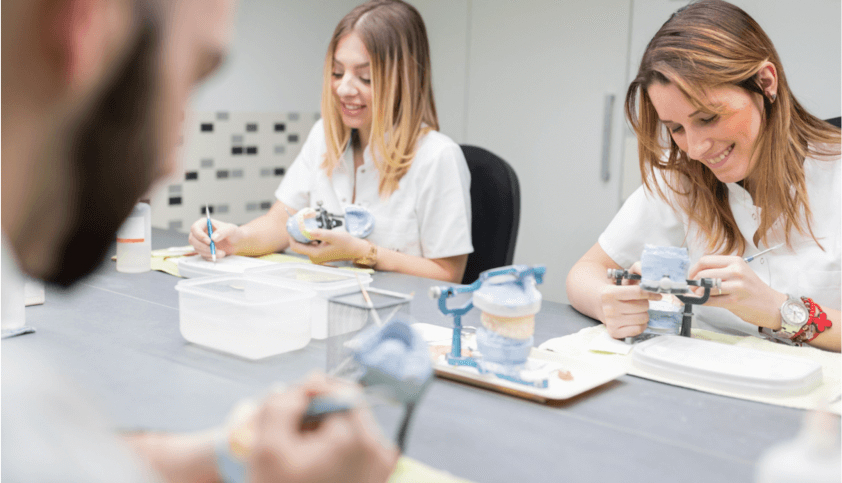Dental technology is evolving rapidly, with new technologies being developed and adopted every day.
Dental technology is rapidly advancing and evolving. It has allowed dental technicians to create more accurate, efficient restorations that are aesthetically pleasing and long-lasting for patients. As the industry grows, it will continue to bring about innovative solutions and products designed to improve patient care.
The future of dental technology looks bright as new developments in robotics, automation, 3D printing, CAD/CAM systems, digital dentistry, and advanced materials promise a revolution in dental care and restoration.
This article will explore the latest trends and innovations in dental technology from the perspective of a dental technician.
It will consider not only the technological advancements that are helping to improve patient care but also how these advances can be utilized by technicians to enhance their practice.
The discussion will focus on the potential benefits for both patients and professionals within the field.
Digital Dentistry
The field of dentistry is constantly evolving, and the latest trend in dental technology is digital dentistry. This exciting new development allows for more precise treatments with greater accuracy than ever before.
Digital imaging gives dentists a comprehensive view of the patient’s mouth to ensure every area is treated properly and efficiently. CAD/CAM software helps to design restorations quickly and accurately, resulting in better outcomes for both dentist and patient.
In addition, 3D printing capabilities allow practitioners to create prosthetics faster than traditional methods. These advancements have revolutionized how we practice modern dentistry, making it easier and more efficient than ever before.
With these innovations, we are now able to provide patients with high-quality care while minimizing their time spent in the chair. As such, we can look ahead toward further developments that will continue to shape our profession for the better.
3d Printing
Digital dentistry has opened up a whole new world of possibilities for dental technicians, offering faster and more accurate production processes.
3D printing is the next step in this digital revolution. By using 3D printers to fabricate objects from CAD files, dental technicians have unprecedented control over their workflows and can produce complex designs with greater accuracy than ever before.
With capabilities such as photo-realistic visualization and automatic error correction, 3D printing opens up a wide range of potential applications that were not possible with traditional manufacturing techniques.
This technology also allows for rapid prototyping, allowing dental technicians to create mockups quickly for patient evaluation before final fabrication. In addition, it eliminates the need for costly tooling or molds which are often required for traditional production methods.
Moving forward, cad/cam technology promises to open even more doors for both clinicians and technicians alike by providing improved efficiency and accuracy throughout the entire workflow process.
Cad/Cam Technology
Computer-aided design and computer-aided manufacturing (CAD/CAM) technology have revolutionized the dental industry.
This type of digital technology is used to create restorations that are highly accurate, precise, and have a better fit than ever before.
CAD/CAM systems allow dentists to take digital images of teeth in 3D and then use software to design custom crowns, bridges, veneers, and implants with greater precision and accuracy than traditional methods.
The system also automates many steps in the restoration process, resulting in faster production times without sacrificing quality or accuracy.
By taking advantage of this powerful technology, dentists can provide superior dental lab service to their patients while improving overall efficiency within their practice.
Moving on from here, advanced dental materials offer further possibilities for improved treatment outcomes.
Advanced Dental Materials

It seems only fitting that in this age of technological advancement, the dental industry or dental technicians should not be left behind.
Although dentistry has been around for centuries, recent years have seen a rapid increase in the development of advanced materials to help make our teeth look and feel better than ever before.
From nanocomposite fillings to porcelain veneers, today’s dentists can offer their patients an unprecedented level of comfort and aesthetics thanks to these cutting-edge treatments.
And as we move into the next era of robotics and automation, it will be interesting to see how far these advances can take us.
Robotics And Automation
The ever-evolving field of dental technology has seen a tremendous surge in the incorporation of robotics and automation into its practices. This new form of innovation is revolutionizing traditionally manual processes, such as drilling, by providing more precise and efficient patient treatments.
Robotics also allows dentists to perform procedures with greater accuracy than before, reducing treatment time while increasing patient comfort. Additionally, automated systems allow for digital records management and easier data tracking which further enhances treatment safety, quality control, and cost-effectiveness.
With these advantages, it is evident that robotic and automated methods are becoming increasingly essential components of modern dentistry. Moving forward, continued research will be critical in developing even more effective applications for robots and automation within the realm of dental technology.
To gain a better understanding of this profession’s role in utilizing this advanced technology, an overview of the dental technician profession is presented next.
Related: Dental Robotics: A Disruptive Technology
Overview Of The Dental Technician Profession
Robotics and automation are becoming more prominent in the dental technician profession, as they can be used to increase efficiency and accuracy.
Dental technicians utilize a variety of tools and techniques such as CAD/CAM systems for crowns, dental bridges, implants, dentures, orthodontics, veneers, etc. These technologies allow technicians to quickly fabricate restorations that meet exact specifications with minimal time investment. They also reduce human error by providing accurate results each time.
Additionally, robotics enable increased precision in fabrication processes through the use of automated machines that can perform operations faster than humans and with greater accuracy.
As technology continues to advance within the field of dentistry, dental technicians need to stay current on trends and innovations so they can best serve their patients’ needs.
Looking ahead into the future of dental technology reveals exciting possibilities for further advancements in materials science, digital scanning devices, 3D printing technologies, telemedicine services, patient-centered care models, and much more.
Such developments will bring even higher levels of quality assurance while making products more affordable to patients who need them most.
The Future Of Dental Technology
Recent estimates suggest that the global dental technology market is projected to reach a value of $36 billion by 2026, growing at a CAGR of 6-7% from 2020-2026.
This significant increase in demand for advanced dental technologies signals an exciting future for the field.
With better access to 3D printing and CAD/CAM systems, dentists can provide higher-quality treatments and customized solutions with greater accuracy than ever before.
Additionally, advances in materials sciences are enabling manufacturers to create stronger and more durable prosthetic components, improving patient outcomes as well as the durability and longevity of restorations.
Looking ahead, it is clear that the future holds even more innovations in dental technology which will further revolutionize the industry and pave the way for improved standards of care worldwide.
Transitioning into this new era, there is no doubt that those working within the field must stay abreast of emerging trends and ensure they remain up-to-date on all advancements to maximize their potential contributions towards transforming oral health practices globally.
Final Thoughts
As dental technology continues to evolve, dentists and technicians must remain aware of the latest developments to provide the most effective care.
What remains clear is that advances in this field are vital for improving patient outcomes while ensuring a more efficient way of working.
From digital imaging systems to computer-aided design and manufacturing (CAD/CAM) technologies, there have been significant advancements over the past few decades that will likely continue into the future.
As such, it is paramount for those involved with dental technology to stay abreast of these changes and be prepared to implement them as needed. It can be said without doubt that technological innovations will continue to play an ever greater role in modern-day dentistry.
With these advancements come increased opportunities for those who have chosen to pursue a career as a dental technician. Dental technicians have an opportunity to stay ahead of the curve by continuing their education on the latest trends in materials science and technology while delivering superior results to their clients.



